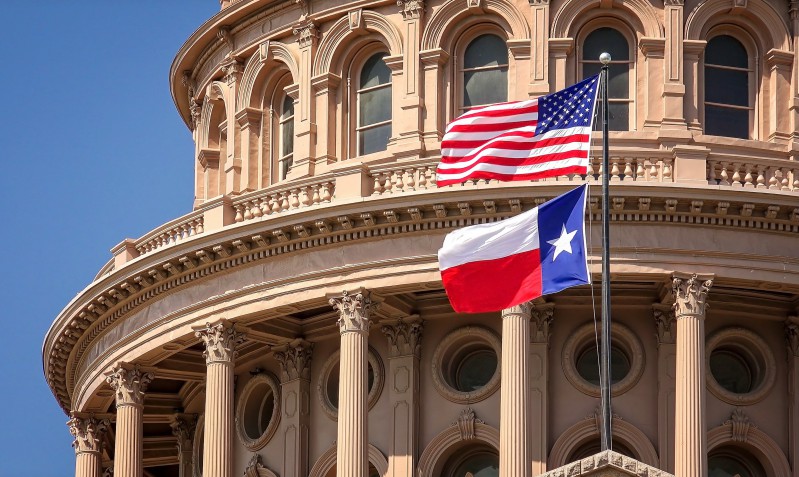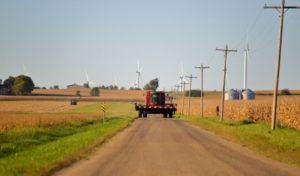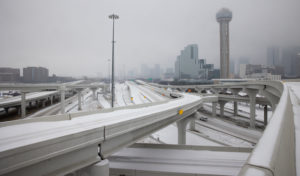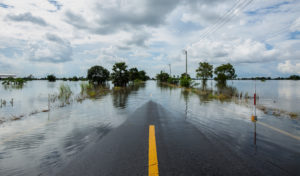
Despite historic power vulnerability, state regulators failed to prepare for the winter storm of the century.
During the winter storm that swept through Texas last month, 11-year-old Cristian Pineda froze to death after forced blackouts brought his family’s north Houston home down to freezing temperatures.
The family claims that the young boy’s death could have been avoided had the Texas electricity system been better prepared for extreme winter weather. This latest winter storm, after all, was not Texas’s first rodeo. Texas has operated its own electricity grid for decades, and it has previously encountered power outages, rolling blackouts, and a grid fundamentally unequipped for cold weather. Yet state regulators—despite previous experience—largely missed the signs that made this winter storm particularly devastating for many Texans.
Texas is currently the only state in the country with its own independent electricity grid. Following the passage of the Federal Power Act—which gave federal regulators the authority to oversee electricity sales that crossed state lines—Texas utility companies banded together to create an independent grid within the state’s borders to avoid federal regulation and interference.
In the absence of federal regulation, the Electric Reliability Council of Texas (ERCOT) oversees the state’s electricity system and manages the supply and demand of power on the state’s grid. Although some Texans celebrate the state’s historic embrace of deregulatory public policies and its “secessionist inclinations,” critics argue that the effects of the recent storm demonstrate the downside of the state’s aversion to federal regulatory oversight.
In 2011, a similar winter storm in Texas caused 3.2 million residents to experience rolling blackouts during single digit temperatures. Leading up to the storm, natural gas pipeline and generator operators reportedly enacted winterization procedures, but the electricity grid’s lack of capacity during the cold snap suggested that the “procedures were either inadequate or were not adequately followed.” If ERCOT had not quickly instituted rolling blackouts in response, the entire grid may have experienced prolonged, uncontrolled loss of power.
Following the 2011 storm, electricity generators sought approval from ERCOT to expand the number of natural gas power plants to increase the grid’s capacity as a preventative measure. But when presented with the proposal, ERCOT and its regulator, the Public Utility Commission of Texas (PUC), apparently refused the requests.
Texas legislators also attempted to address the issue. Former State Senator Glenn Hegar authored legislation following the 2011 storm that required PUC to analyze existing emergency plans, examine the state grid’s capacity to endure extreme weather events, and submit recommendations for improving emergency operations.
The legislation, however, appears to have done little to push state regulators towards learning from their past mistakes. Despite a decade to act, state regulators repeatedly failed to ensure that utilities had winterized their power plants properly.
“While the issues that are plaguing our electric grid system in this disastrous winter storm are complex, I am extremely frustrated that ten years later our electric grid remains so ill-equipped for these weather events,” Hegar stated following the storm last month.
A week before the most recent storm, grid operators urged power plants to prepare for colder temperatures. Yet as temperatures continued to drop once the storm made landfall, wind turbine generators and natural gas and coal plants iced over and shut down, repeating the events of 2011, but on a larger scale. According to recently fired ERCOT president Bill Magness, forcing “controlled” blackouts was the only way the state could circumvent a prolonged loss of power. These latest Texas blackouts were the largest forced power outage in U.S. history.
As the state power grid buckled, skyrocketing demand for electricity left more than 4.5 million people without power and nearly 15 million people without running water for days.
The winter storm last month may turn out to have been the costliest natural disaster in Texas history, with experts estimating up to $295 billion dollars in damage. Comparatively, Hurricane Harvey, one of the most destructive storms in United States history, cost $125 billion dollars when it swept through Texas in 2017. For many Texans, it may be months, if not years, before they fully recover from the impacts of the recent storm.
In the wake of this latest winter storm, just like in 2011, the Texas legislature is calling for an investigation into why the state experienced such catastrophic blackouts despite clear warnings and despite the state’s reputation as the energy capital of the United States.
As investigations, hearings, and calls for accountability continue following last month’s storm, one question remains: Without substantive regulatory changes, how long will it be until history repeats itself again?



